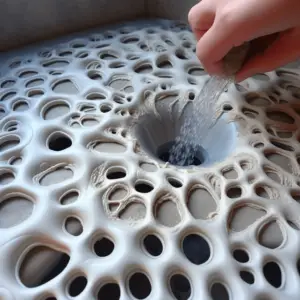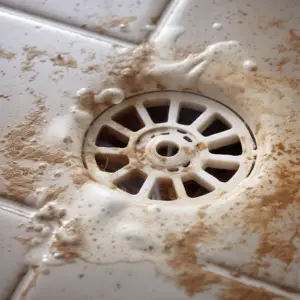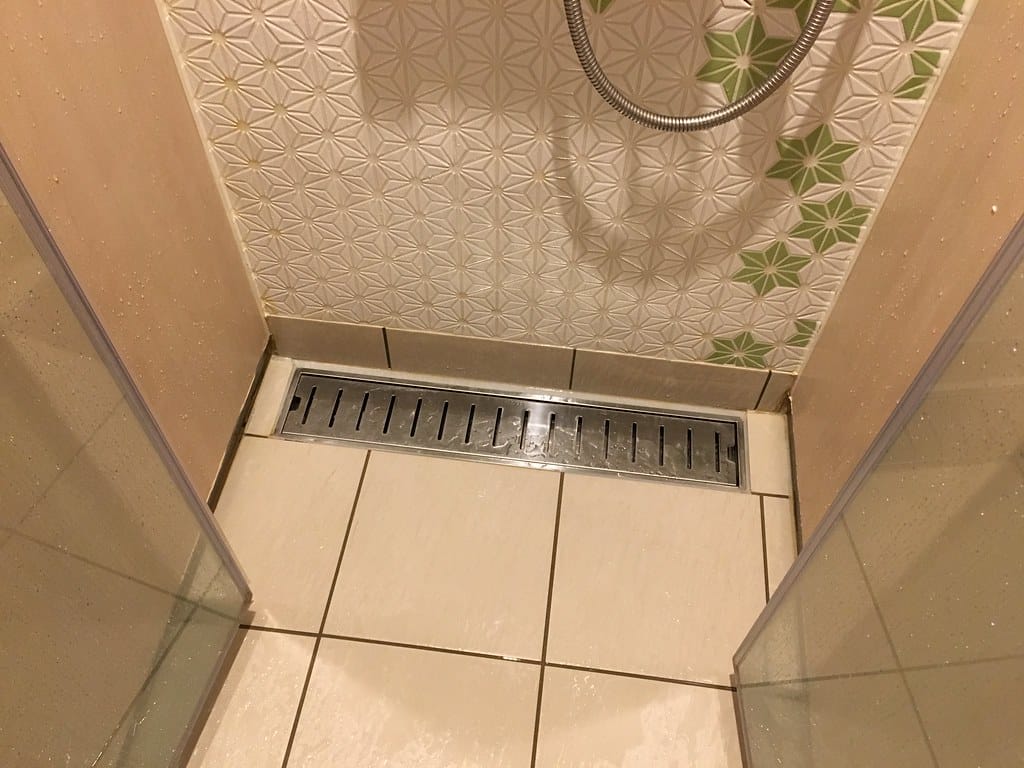Calcium buildup, Shower drains are not something everyone thinks about, but they are an important part of your home that needs to be maintained. On that note, the use of hard water can cause a high amount of dissolved minerals such as magnesium, potassium, and calcium to build up in shower drains.
These mineral deposits often cause cement-like stuff, which can damage some shower features including shower drains, showerheads, and faucets. Fortunately, you can easily clean up the unwanted calcium carbonate using household items.
Table of Contents
How to Remove Cement-Like Stuff in Shower Drain

The hard water build-up can be removed by adding equal parts of white vinegar and baking soda to the drain. Certain commercial cleaners can also be used to get rid of calcium deposits. A good example of such a product is the Lime-A-Way Bathroom Cleaner.
The downside to some lime drain cleaners is that they tend to emit toxic fumes and aren’t safe for consumption. That said, you can always use baking soda and white vinegar as they are used as ingredients in food.
For this process, you will need baking soda, white vinegar, and hot water. Then check out the following steps to get rid of calcium buildup in your shower drains.
Drain Water from the Drain & Drain Pipes
In the vent that limescale has clogged up your drain, there will be some water in the drain. Remove this stagnant water by plunging the drain hole with a plunger. In case that doesn’t work, insert a brush into the drain towards the drainpipe then brush off the unwanted stuff to open up the drain pipe. The water should also be drained away.
Pour White vinegar and Baking Soda into the Drain
Pour half a cup of white vinegar and half a cup of baking soda into the drain. You pour them in any order as this doesn’t impact the effectiveness whether you start with white vinegar or baking soda. After all, white vinegar and baking soda make a great homemade limescale dissolver.
Cover the Shower Drain with a Damp Cloth
Next up, you will need to cover the shower drain with a damp cloth for about 15 minutes. Covering the ingredients will help to keep the gas generated from escaping. The point behind using a damp cloth is that the dampness will make the piece of cloth airtight.
The water will fill the spaces in between the pieces of fabric in both the cloth, thereby making it airtight.
Once you’ve covered the drain, leave it for about 15 minutes for the baking soda and vinegar to dissolve the calcium buildup in the shower drain as well as the drainpipes. You should hear fizzing and bubbling sounds from the drain.
Rinse The Shower With Hot Water
The next step is to rinse the shower with hot water. Remove the stated piece of cloth from the shower drain and then pour at least a gallon of hot water into it. The hot water will further remove the remaining limescale in the drain and drainpipe then wash it down.
Cleaning Up Around the Drain
Using a sponge and a tablespoon of white vinegar, clean up the area around the shower drain and gently wipe the area for any baking soda or white vinegar that might have spilled on it. Clean the shower drain cover as well by putting it in a solution with equal parts of white vinegar and baking soda. Brush it with a soft-bristled brush and then rinse it with hot water.
Sometimes, calcified drain pipes may require a plumber to take them apart and remove the mineral deposits especially if they have completely clogged it up. Note that clogged pipes can also lead to a smelly shower drain. Overall, white vinegar and baking soda remove clogged drain mineral deposits quite effectively.
Chemical Drain Cleaners
In case the cement-like stuff is too stubborn for a home remedy, you might want to purchase a calcium removal product. One of the common solutions that can remove calcium, lime, and rust deposits on various surfaces is CLR. It is also known to be very easy to use.
Put two ounces of undiluted product directly into the drain for five days in a row. It is recommended that you use gloves and protective gear for safety reasons to protect your skin and eyes. In terms of regular maintenance, put two ounces of the product in the drain once a month or use a different CLR product.
Calcium and limescale can be so stubborn sometimes that neither a DIY method nor commercial products can deal with them effectively. In that case, you might have to call a professional plumber to resolve the problem.
Causes of Cement-Like Stuff in Shower Drains

As mentioned, calcium buildup in shower drains is caused by calcium deposits from hard water. Note that hard water contains various minerals such as sodium, calcium, magnesium, gypsum, limestone, chalk, and others.
All these minerals don’t completely dissolve in the water and will get deposited onto pipes, showerheads, and shower drains. If for instance, your shower head makes roaring sounds, it’s possible that there’s a calcium buildup.
The fact that magnesium and calcium are the most abundant in hard water means that most of the white cement-like stuff you see in shower drains is made of calcium and magnesium deposits.
Otherwise, if you use soft water in your bathroom, you will hardly end up with a hard buildup in the shower drain. It’s good to state that a shower drain should have a P-trap that keeps sewer gases away from the house. The P-traps can easily get clogged if there is a lot of hard build-ups.
How to Prevent Calcium Buildup
If you are not ready to install a complete house water softener to fix your hard water problem, you can prevent calcium buildup by installing a new water-softening showerhead or a filter that can be attached to an existing showerhead. This will help to achieve cleaner shower drains for your family.


